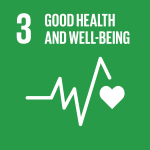12 November 2019, Mogadishu, Somalia – Somalia and the United Nations Development Programme (UNDP) today launch a new US$10 million climate adaptation project to help rural communities secure access to diminishing water supplies. More than 360,000 farmers and pastoralists are set to benefit from sustainable water management, expanded drought and flood early-warning systems and more profitable livelihoods.
“With the onset of climate change, our country is facing more frequent droughts and floods. Those living in rural regions are particularly vulnerable,” said Somalia's Deputy Prime Minister, H.E. Mahdi Mohammed Gulaid. “Under this new project, we will put in place the foundations for Somalia and its people to manage their precious water. This includes reforming national policies and systems; building knowledge and skills at the national, state and community level; and expanding climate-monitoring infrastructure and early-warning systems.”
Somalia experiences major climate-induced shocks every two to five years, with flooding, cyclones and particularly drought. These have contributed to the displacement of 2.6 million people across Somalia and increased competition for water and land to support animals and crops.
The effect of climate change in reducing already scarce water resources is expected to exacerbate conflict within communities. Illegal armed groups, such as Al-Shabaab, have already targeted young people for recruitment, particularly in rural regions beset by drought-induced food insecurity and widespread unemployment.
Pastoralists are particularly vulnerable to changes in climate because they rely on rain-fed rangeland for grazing livestock and have very few fixed assets. Often lacking formal ownership of land, they are marginalised in disputes over access to water.
Led by Somalia’s Directorate of Environment and Climate Change, Office of the Prime Minister and implemented by the Ministry of Energy and Water Resources, with US$8.8 million from the Global Environment Facility’s Least Developed Countries Fund and US$1.5 million from the United Nations Development Programme (UNDP), the new four-year project will establish Somalia’s first National Hydro-Meteorological and Monitoring Service, install automatic weather stations and monitoring equipment across the country and expand Somalia’s existing flood and drought forecasting and early warning tool (FRISC-DIGNIIN).
The project will also work closely with villages to provide training on flood management and water conservation, as well as teaching pastoralists and small-scale farmers, including both men and women, to sustainably produce farming and livestock products.
“This project will help us to tackle Somalia’s greatest challenges in water management and make sure that institutions and communities are more resilient to climate impacts,” said Somalia's Minister of Energy and Water Resources, H.E. Fowzia Mohammed Sheikh.
“This important initiative feeds into Somalia’s priorities identified under its National Adaptation Programme of Action and Nationally Determined Contribution under the global Paris Agreement,” said UNDP Resident Representative, Jocelyn Mason. “We are extremely pleased to see this fantastic project begin and are proving technical support for implementation. Access to clean water saves lives directly, but is also closely linked to food security, livelihoods, poverty reduction, gender equality and – in Somalia’s case – peace and security. Given increasing water scarcity in Somalia, the choice as to how each drop should be allocated and managed is critical.”
Video
Media enquiries
Robert Few | UNDP Somalia | robert.few@undp.org | +252 61 41 250 46
Notes to Editor
Approximately 60% of Somalia is arid or semi-arid. Roughly 75% of Somalia’s population is located in rural areas. Approximately 60% practice pastoralism and 15% practice agriculture. Together they account for the greatest proportion of the population living in extreme poverty.
Access to water is a growing issue for farmers and pastoralists across the country due to an increase in climate-related severe weather events, a rise in mineralization and salinization and erosion of traditional grazing routes.
During periods of drought, communities have no other option than to buy water from berkads (traditional water catchments), typically costing around US$6 per day for each rural household in areas where daily incomes average US$1.25.
Fetching water can also take up to six hours per day and this burden usually falls on women and children.
Due to a lack of investment and damage during Somalia’s protracted civil war, the national climate monitoring network – and therefore the capacity to forecast droughts and floods – is extremely limited. Currently the government lacks the capacity to issue early warnings or provide accurate rainfall information to help communities manage their water resources.
Further exacerbating the challenges are fragmented state-level and sectoral water policies, as well as limited in-country technical capacity in integrated water resources management and flood and drought forecasting.
Learn more about the Support for Integrated Water Resources Management to Ensure Water Access and Disaster Reduction for Somalia's Pastoralists project. View original press release on UNDP Somalia.


